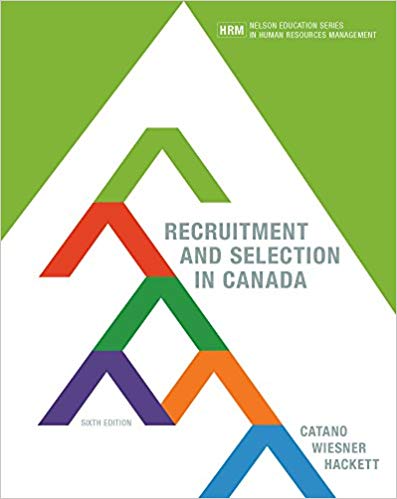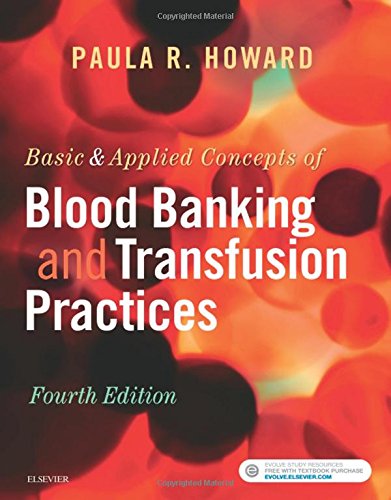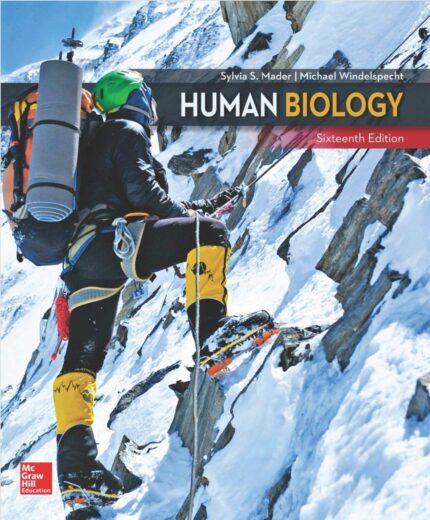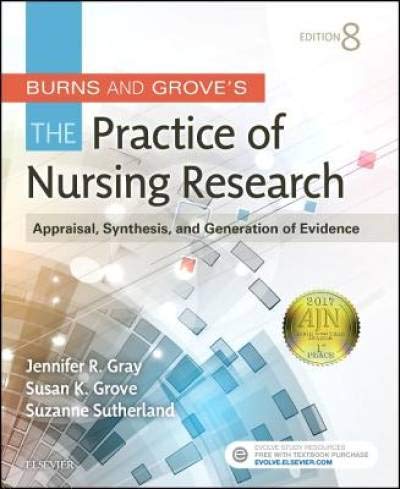Recruitment And Selection in Canada 6th Edition By Victor Catano – Test Bank
Chapter 4 Job Analysis and Competency Models
MULTIPLE CHOICE
1.Why is a job analysis important for recruitment and selection?
|
a. |
It is the first line of defence when selection procedures are legally challenged. |
|
b. |
It emphasizes selection skills and responsibilities while de-emphasizing effort and working conditions. |
|
c. |
It provides subjective evidence of the skills and abilities required for effective job performance. |
|
d. |
It establishes the worth of a job and defines it in measurable terms. |
ANS: A PTS: 1 REF: 114, 117, 118 OBJ: 1
BLM:Higher Order
2. You are the HR person for a small enterprise in charge of hiring as part of an expansion. You want to be sure that you hire the right people for the new positions. The first question that comes to mind is how to identify exactly who you are looking for. A job analysis will help you get the necessary information. Job analyses procedures can be very elaborate; however, a job analysis is nothing more than finding answers to a series of questions about the job. Ask yourself a series of questions that will help you find the right person.
In this situation, which of the following questions would you NOT ask to collect information in a job analysis?
|
a. |
Will there be any differences in the job in the future compared to the past? |
|
b. |
What do you wish your new hires to accomplish? |
|
c. |
What do people who hold similar jobs think about the knowledge, skills, abilities, and other attributes needed? |
|
d. |
Will the employees do different things on different days? |
ANS: A PTS: 1 REF: 113 OBJ: 1
BLM: Remember
3.Which concept describes the process of collecting information about jobs by any method for any purpose?
|
a. |
organizational analysis |
|
b. |
job analysis |
|
c. |
work analysis |
|
d. |
needs analysis |
ANS: B PTS: 1 REF: 113 OBJ: 1
BLM: Remember
4.Which of the following best defines work analysis?
|
a. |
the knowledge, skills, abilities, and other attributes that are needed by a job incumbent to do the work |
|
b. |
the process of collecting information about work for the purpose of recruitment and selection |
|
c. |
the systematic process for gathering, documenting, and analyzing data about the work required for a job |
|
d. |
a review of the work of all similar positions |
ANS: C PTS: 1 REF: 113 OBJ: 1
BLM: Remember
5.What source of data is NOT typically used in a job analysis?
|
a. |
employees |
|
b. |
managers |
|
c. |
shareholders |
|
d. |
supervisors |
ANS: C PTS: 1 REF: 114 OBJ: 2
BLM: Remember
6.Which of the following does NOT describe one of the three key considerations in job analysis?
|
a. |
A job analysis is a formal, structured process carried out under a set of guidelines established in advance. |
|
b. |
A job analysis refers to a single methodology. |
|
c. |
A job analysis breaks down a job into its constituent parts, rather than looking at the job as a whole. |
|
d. |
A job analysis uses a range of techniques. |
ANS: B PTS: 1 REF: 114 OBJ: 1
BLM: Remember
7.Which of the following would NOT typically be used as data for a job analysis?
|
a. |
performance |
|
b. |
standards |
|
c. |
responsibilities |
|
d. |
knowledge |
ANS: A PTS: 1 REF: 114 OBJ: 2
BLM: Remember
8.What is the definition of job specifications?
|
a. |
a collection of positions with related job activities and duties |
|
b. |
the different duties and responsibilities performed by one employee |
|
c. |
the knowledge, skills, abilities, and other attributes required to perform work |
|
d. |
the tasks, duties, and responsibilities associated with work |
ANS: C PTS: 1 REF: 114–115 OBJ: 1
BLM: Remember
9.A hospital employs a variety of individuals as nurses, doctors, technicians, and so forth. How are these groups of employees classified?
|
a. |
by position |
|
b. |
by role |
|
c. |
by worker |
|
d. |
by job |
ANS: D PTS: 1 REF: 115 OBJ: 1
BLM: Remember
10.What is the definition of a job?
|
a. |
a collection of positions that are similar in their significant duties |
|
b. |
the different duties and responsibilities performed by one employee |
|
c. |
the knowledge, skills, and abilities required to perform work |
|
d. |
the tasks, duties, and responsibilities associated with work |
ANS: A PTS: 1 REF: 115 OBJ: 1
BLM: Remember
11.What is the meaning of job family?
|
a. |
a collection of positions with related job activities and duties |
|
b. |
a set of related jobs that rely on the same knowledge, skills, abilities, and other attributes |
|
c. |
the knowledge, skills, and abilities required to perform work |
|
d. |
the tasks, duties, and responsibilities associated with work |
ANS: B PTS: 1 REF: 115 OBJ: 1
BLM: Remember
12.What are NOT potential outcomes of the job analysis process?
|
a. |
job descriptions and job design |
|
b. |
job evaluation and performance measures |
|
c. |
organizational analysis and performance standards |
|
d. |
person–job fit and person–organization fit |
ANS: D PTS: 1 REF: 115 OBJ: 3
BLM:Higher Order
13.Why are subject-matter experts needed when conducting a job analysis?
|
a. |
They are an inexpensive source of information for an organization. |
|
b. |
They are the most knowledgeable about a job and how it is currently performed. |
|
c. |
They add external validity to the organization with external comparisons to jobs. |
|
d. |
They provide more accurate information than job incumbents and supervisors. |
ANS: B PTS: 1 REF: 116 OBJ: 1
BLM:Higher Order














Reviews
There are no reviews yet.